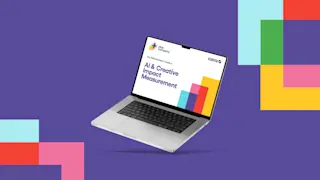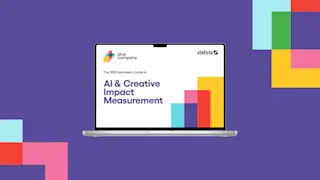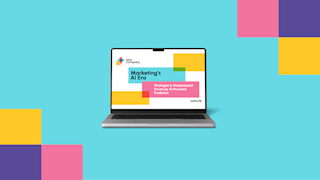The Creative Effectiveness Flywheel and Why You Need it
And how it can help you grow your brand.

The way we currently bring campaigns to market is broken.
As the variety of tactics and channels employed by a typical marketing campaign continues to grow and evolve, it becomes more and more challenging to manage and measure creative effectiveness. There have been many point solutions, but very little synergy.
Now brands want to better connect these streams for greater creative impact. Organizations demand more efficient campaign management, real time data and constant optimization. The pace of change in consumer behaviour in response to new technologies challenges agencies and their clients to keep up. Ai has the power to connect all of these elements in a way that unlocks more efficiencies, more synergies and more effectiveness.
In considering the way things get done traditionally, the image of a waterfall comes to mind. At the top of the falls, you start with strategy and planning. Based on inputs such as customer research data and competitive analysis, a brief is written and handed to the creative team. Concepts are created and evaluated. Based on the approved approach, some kind of anchor creative – often a costly filmed asset – is produced, with various other tactical components built around it.
Then, the whole configuration plunges over the edge until it hits bottom, where it fragments into several disconnected tactical streams, each chasing its own metric. You have internal CRM teams creating assets. You have your social agency creating content. Your performance media teams are cranking out performance marketing messages. You have waves of promotional campaigns pushing offers and discounts. And you have programmatic advertising, which tends to optimize itself against its own variables such as click-through rates, registration, trial or purchase.
Unfortunately, these streams do not often connect back to the core creative, let alone to each other. There's a huge gap between all that great work that you've done at the top of the falls and the swirl of tactical fragments at the bottom, where both activation and measurement are siloed.
It doesn’t have to be this way. What if you could connect these disparate elements? What if you could make your big brand ideas come to life more efficiently and effectively? Or could create a better customer experience? What if you could adapt the creative to better serve customer needs? And what if you could actually empower your creatives to respond to market and performance signals instead of just pushing their creative over the waterfall and waiting to see how it turns out?
There is a demand for all those ‘what ifs’. Fortune 500 organizations want more innovative, integrated thinking across disciplines and agencies to drive greater creative potency, volume and impact with tighter budgets. Billion-dollar brands seek more data connection to unlock important efficiency, synergy and effectiveness. CMOs see the need for central data decision-making that breaks internal barriers and helps the business grow faster. Mid-market brands are looking for new ways of working that bring all creative ideation, production and optimization closer together in service of faster, cheaper, and better marketing communications.
Now, instead of a waterfall, imagine your marketing campaign as a circle in which strategy, creative, activation and measurement feed into each other in a continuous loop. In the centre of the loop is AI, empowering each element towards optimization and brand growth.

The strategic section of the loop identifies the strategic approach and makes incremental improvements (including tweaks to the creative) in response to campaign and customer dynamics. This feeds the brief to inform creative, enabling more targeted or personalized creative to be developed reflecting more of the audience's preferences and current market conditions. The activation phase translates plans into executable elements that work in concert across paid, earned and owned media. And measurement is possible at all points in the loop on an ongoing basis.
We call this the ‘creative flywheel effect’. It’s an AI-fueled marketing communications process that essentially runs itself. And it does so more efficiently, accurately and effectively across any size brand. Whether you're a huge brand investing in a 60 second Super Bowl spot or a mid-sized, hundred-million-dollar turnover brand trying to build out a platform across multiple channels, the flywheel pulls it all together in a continuous, holistic flow instead of trying to manage it as a melange of isolated activities and data streams.
Want to learn more about Artificial Intelligence and how including it in your creative measurement strategy and processes will provide a competitive edge? Get The 2025 Marketer’s Guide to Creative Impact Measurement today. There you will find the results of the latest Plus Company-Statista research report on the adoption of AI how to transform your business. Download the report here.
Share


